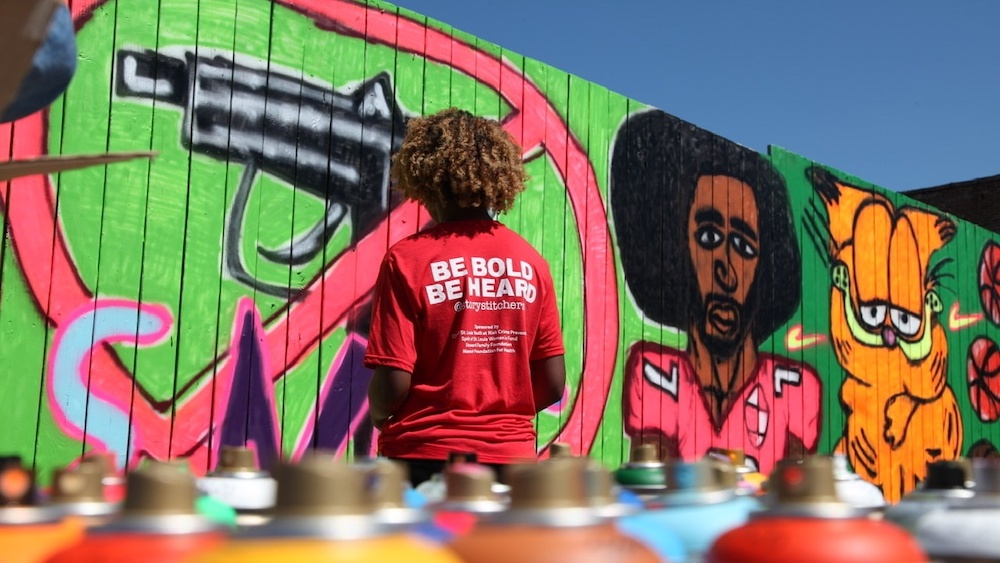If you’re interested in sharing your opinion on any cultural, political or personal topic, create an account here and check out our how-to post to learn more.
____
I remember the summer of 2018 as one of the most painful summers of my life. That summer, I lost several friends due to the unbearable amount of gun violence that seems to penetrate our urban communities in St. Louis.
Everything felt unrealistic. The guns, the violence, the loss and the pain. The descriptions of the fatalities my friends had to encounter was all that would replay in my head that summer. One thought would trigger the next and before I could come back to reality, tears would fall. Tears that embodied my sorrow and mingled with the curve of my upper jawline before being caught in the fabric of my shirt.
At that time, I was an intern at Saint Louis Story Stitchers. Our group of interns was tired of seeing our people become victims to the scorching crime rate. Everyone wanted to see change.
My friends and I often talk to elders in our communities who share stories of what St. Louis used to be like. They tell us about how the Ville was a thriving and energetic community in the 1950s and '60s. Almost everyone knew each other, from business owners to teachers and students to Black community leaders, and the entire community seemed full of the promise of the American Dream. St. Louis was a vision of hope.
We knew that it was somehow our duty to restore that hope. No matter how great or small the impact, we knew it needed to be done. So, we were inspired to write a song that would not only communicate the impact of decades of disenfranchisement on a city and its residents, but also serve as a call-to-action for the urgent change we needed.
Through the process of writing our song, I tried to scatter my pain on college ruled paper. It seemed as if I couldn’t find the words to explain the magnitude of what one feels after loss — not just in my own life, but loss to the wider community. It seemed as if the pages I wrote on could hold my tears better than I could. I found this to be true for a lot of youth in my city. Many of us turn to the arts to express ourselves in the hopes that what we send out through our poetry, raps, singing and dancing comes back with fruit. Ripe and ready for the next steps to restoration.
"Who’s Ready?” was the end product of a summer filled with soul searching moments. We knew this song would be the perfect way to help ignite change in our communities. We felt that we had a message that needed to be heard and that this song was it.
My favorite performance of “Who’s Ready?” was at our annual community block party in the Wellston Loop. When we went up to grab the mics, it was as if we knew the stage was ours. Throughout the performance, it was amazing to see the audience engulfed in the message. They seemed empowered, moved and overwhelmed with joy from the sound of such a powerful message coming from such young messengers. We felt the hope rise above the agony.
For those few moments I would forget what I had lost. The positive reaction that we received from the audience was reassuring to a young group of activists, a reminder that music can be used to help bring the change that is needed. It showed us that the voices of youth still matter.
As a young creative, I sometimes feel my goals seem too ambitious for the world around me, especially the goals that involve rebuilding our people and communities. But I also know that our activism will create the change our community needs.
Here is my message to other young people across the country who may be facing a heavy burden: Do not give up hope. Your voice has power. You can be a force for change. And whether it's through the arts, or music, or through your words, you can share and express your message. And people will listen. My community did — and we’re finally at the start of the change we all wanted.
Find your voice and never stop singing.
____
Emeara Burns is a 22-year old musician and Program Director of the Saint Louis Story Stitchers.
